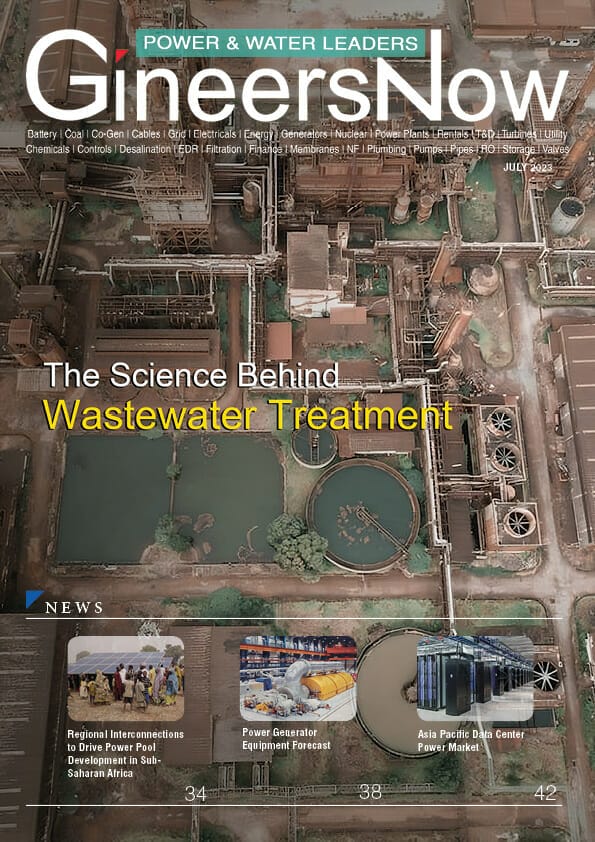As the world continues to experience rapid changes and developments in the energy sector, it is important to stay informed on the latest trends. We will explore oil and gas trends in 2023, discussing the potential of renewable resources, their effect on demand, and how they influence decisions across industry organizations. With an increasing focus on environmental sustainability, this article will also examine how oil and gas businesses are responding to potential future regulations.
This article will take a look at the past, present, and future of oil and gas trends in 2023. The advancements made in the last decade have drastically changed how we use and produce oil and gas. As we continue to move forward, more technology is being developed to help reduce emissions and increase efficiency. In 2023, many of these innovations will likely come to fruition, making the industry much more sustainable.
Past: Historical Developments
The oil and gas industry has been around for centuries, yet the industry continues to evolve. Even though we will be looking forward to new oil and gas trends in 2023, it is important to look back and examine the historical developments that have shaped today’s oil and gas sector.
Beginning in the late 18th century, petroleum began being used as a source of energy on a large scale; this marked the beginning of the modern era of oil exploration. As technology progressed, so did our ability to refine oil into more usable forms such as gasoline or kerosene; this increased its utilization across many industries, from transportation and manufacturing to agriculture. During World War II, synthetic rubber was developed using petroleum-based chemicals, which enabled tires for motorized vehicles across Europe and beyond.
The discovery of crude oil reserves in Saudi Arabia in 1938 and the subsequent development of its oil fields laid the foundation for an industry that has now become a major source of revenue for Saudi Arabia and other OPEC nations.
Present: Oil and Gas Trends in 2023
Oil and gas have long been a cornerstone of the global economy. In recent years, advances in technology and increased efficiency have allowed for greater production and improved safety standards in working environments. As we look ahead to 2023, it is important to consider how these oil and gas trends in 2023 will continue to shape the industry.
As more countries focus on renewable energy sources, oil and gas companies are looking for ways to remain competitive. This includes utilizing new technologies such as artificial intelligence (AI) and virtual reality (VR), which can help optimize production processes while ensuring safer work conditions. Additionally, companies will likely invest more in research and development projects focusing on reducing fossil fuel emissions.
It is also expected that 2023 will be a year when the public turns its attention toward holding oil and gas companies accountable for their environmental impact.
Renewable Energy: Rising Popularity
The energy industry has seen a rapid shift in recent years as renewable energy sources have become increasingly popular. This has been driven by an increasing understanding among consumers and businesses alike of the potential harms posed by traditional energy sources such as oil and gas. In 2023, this trend is likely to continue, with renewable energy sources becoming ever more important.
In terms of the future oil and gas trends in 2023 and its future, they will likely continue to be used but will form a smaller proportion of our overall energy needs than previously seen. Renewables like solar, wind, and hydroelectricity are expected to increase the total share in 2023 as countries strive for cleaner forms of power generation. For example, in Europe alone, it is estimated that renewable sources could provide more than 50%of its electricity consumption by 2025.
Fossil Fuels: Diminishing Use
Fossil fuels, such as oil and gas, are projected to diminish in availability and use by 2023. This is due to various oil and gas trends in 2023 that have been observed in the global energy industry over the past few years. As renewable energy sources become more widely accepted and implemented worldwide, demand for traditional fossil fuels will continue to decrease. In addition, many countries are enacting legislation that aims to limit emissions from burning these fuels. This will also lead to a decrease in their use going forward.
The shift away from fossil fuel usage has significant economic implications for countries worldwide that depend on these resources for their energy needs, especially those that rely heavily on oil exports as an important source of revenue.
Oil and Gas Tech: Advancing
In the ever-evolving energy industry, now more than ever, oil and gas technology is a constantly advancing field. As society takes leaps forward toward renewable sources of energy, oil and gas remain at the forefront of powering economic growth in many countries around the world. As we look ahead to 2023, experts are predicting some interesting trends in the oil and gas 2023 sector that could define how it functions for years to come.
The first trend likely to emerge is a shift towards digital technologies such as machine learning, artificial intelligence (AI), 3D printing, robotics, and automation. These technologies will improve safety across operations while reducing costs and boosting efficiency.
Additionally, companies are already exploring ways to implement blockchain technology into their systems to streamline processes further and improve transparency within supply chains.
Impact on Companies & Economies
In the not-so-distant future of 2023, the trends in oil and gas will have a seismic impact on companies and economies. While some predict that the industry will continue to thrive, others feel it’s slowly becoming antiquated. For those vested in oil and gas production industries, understanding these oil and gas trends in 2023 is a must if they hope to stay competitive.
Oil and gas production is expected to rise as technology becomes more advanced in the coming years. While this might seem good news for those invested in energy markets, there are still questions about whether or not this increased production can keep up with demand. As new renewable energy sources become available, it could put traditional oil and gas production at a disadvantage as businesses turn away from nonrenewable energy sources.
Impact of Technology on the Oil and Gas Industry
The oil and gas industry is expected to undergo a major transformation in the coming years, with technological advancements significantly impacting the sector. By 2023, it is estimated that new technologies will have revolutionized how oil and gas companies operate. The digitalization of operations and increased use of automation are expected to be key trends shaping the industry’s development over the next few years.
Furthermore, data management and analytics technology advances are set to benefit the sector by providing deeper insights into operational processes. This could help oil and gas companies improve efficiency while keeping costs down by allowing them to make better-informed decisions based on real-time data analysis.
Additionally, cloud computing technology may play an important role in driving innovation throughout the industry as it can offer access to powerful tools without requiring large upfront investments.
Environmental Regulations and Challenges
As the world turns its focus to more sustainable energy sources, oil and gas companies must adapt and adjust to keep up with new regulations. In 2023, oil and gas production will face a number of environmental challenges due to significant changes in government policies around the globe. Companies operating within this industry must be aware of all upcoming oil and gas trends in 2023 if they want to remain competitive over the next few years.
In particular, tighter emissions restrictions will likely be imposed upon oil and gas operations across multiple countries. This means that businesses will need to invest heavily in research and development for cleaner technologies and evaluate their current practices to reduce their ecological footprint.
Additionally, new rules may require companies to disclose details about their carbon emissions, putting an even greater emphasis on environmental protection efforts.
Corporate Investment Strategies
The world of oil and gas continues to change and evolve with the times. In 2023, a number of new oil and gas trends in 2023 will emerge that companies in the sector must keep an eye on if they want to remain competitive and continue to succeed. Companies must stay ahead of the curve by investing in strategies to help them make the most of these new oil and gas trends in 2023.
One major trend for 2023 is a shift towards renewable energy sources such as solar, wind, and hydroelectric power. As more nations worldwide begin introducing policies promoting sustainable energy production, companies must find ways to invest in green technologies. This could include researching alternative fuels or investing in renewable energy infrastructure projects.
Additionally, there will be an increased emphasis on reducing emissions from existing oil and gas operations to meet their sustainability goals while still operating efficiently.
Expansion of Production Capacity
The oil and gas industry is always changing, and 2023 marks the beginning of a new era for the sector. Companies are continuing to innovate and expand production capacity to meet the growing demands of consumers around the world. With global energy demand projected to rise significantly over the next few years, it’s important that companies increase production capacity to meet this demand.
In 2023, we will see an increase in oil and gas exploration technologies, including improved seismic imaging and data analysis tools and enhanced artificial intelligence capabilities. These technologies will enable companies to quickly identify potential oil or natural gas reserves within a given area, greatly increasing their ability to expand their production capacities rapidly.
We may also see increased investment in renewable energy resources such as wind and solar power as more countries commit themselves to reducing emissions by 2050.
Automation: Increased Deployment
As the world continues to be driven by technology, oil and gas companies are increasingly turning to automation to streamline operations. By 2023, there is expected to be a major increase in the deployment of automated technologies in the oil and gas industry. Automation offers many advantages, such as improved accuracy, increased safety, and reduced costs.
The use of robotics is becoming an important part of oil and gas production processes. Automated machines can take on many tasks that were traditionally done manually by humans. This includes gathering data from wells, controlling valves and pumps, inspecting pipelines, and monitoring equipment performance without human intervention. Additionally, autonomous systems allow for better collaboration between teams across different sites or regions due to data-sharing capabilities.
Automation not only increases efficiency but also provides an enhanced level of safety for workers handling hazardous materials.
The future of autonomous oil and gas: what’s next?
The oil and gas industry has recently been undergoing a dramatic transformation, introducing new technologies such as autonomous drilling systems and advanced analytics. As these changes continue to shape the industry’s landscape, it is important to consider what lies ahead in 2023. This article will examine the current trends in oil and gas 2023 technology and potential opportunities for further development in this area.
Autonomous drilling systems are becoming increasingly popular due to their ability to reduce costs and improve safety by eliminating human error from operations. Autonomous systems can also be used for predictive maintenance tasks, allowing companies to plan for future activities more efficiently.
In addition, advances in digital technology have enabled increased automation of processes such as data collection and analysis, which can help optimize operations and reduce downtime due to unexpected events.
Digitalization: Enhancing Efficiency
Oil and gas companies have been quick to take advantage of digitalization. As the industry continues to grow, these businesses are using digital technology to enhance efficiency in their operations. In 2023 oil and gas trends will continue to be driven by the need for digital transformation.
Digital transformation is an essential part of any business’s success. Digital technologies can help increase efficiency in the oil and gas industry by streamlining processes, automating manual tasks, improving communication between departments, and reducing costs associated with traditional methods of service delivery. By leveraging data-driven insights, companies can gain visibility into their asset performance, allowing them to make informed decisions about operations more quickly than ever before.
Additionally, new innovations such as cloud computing are making it easier than ever for businesses in this sector to access real-time data when they need it most.
Exploration: New Discoveries
The oil and gas industry is always changing, and the year 2023 will be no different. Despite the volatility of the energy market, new discoveries are always made, proving that exploration remains a key factor in the future of oil and gas production. In 2023, industry experts expect to see oil and gas trends 2023 with major shifts in explorations; companies continue to seek out various sources of oil and gas worldwide.
With recent advancements in technology, there are now more options for exploration than ever before. Companies can use 3D imaging software to locate potential drill sites more quickly than ever before. Advanced seismic surveys can also provide detailed information about underground formations that could contain valuable resources worth exploring.
Additionally, geologists are utilizing big data analytics to understand better how geological structures may lead to new discoveries in overlooked areas of the Earth’s surface or deep underground.
Decarbonization: Mitigating Emissions
Oil and gas have long been a mainstay of the global energy industry, but in recent years the industry has seen an increased focus on decarbonization. In 2023, oil and gas companies will continue to place emphasis on mitigating emissions through various initiatives.
The trend toward decarbonization is driven by both economic and ecological considerations. As public awareness of climate change increases, so too does the pressure on governments to reduce emissions levels globally. Oil and gas companies are responding to these demands with innovative strategies for reducing their environmental impact, such as investing in carbon capture projects or replacing fossil fuel-powered engines with electric ones.
Additionally, many oil firms are now using renewable energy sources such as wind or solar power to meet their energy needs.
Alternative Energy Development
Oil and gas industries have been major contributors to the global economy for centuries. Although these industries produce immense amounts of energy, they also lead to pollution and negative environmental outcomes. As such, oil and gas trends in 2023 are being closely monitored as alternative energy sources become increasingly popular.
In 2023, it is expected that oil and gas will still be a major source of fuel for many countries around the world due to their plentiful supply. However, with a greater focus on reducing carbon emissions, there will likely be an increased emphasis on renewables like solar energy or wind power instead of fossil fuels.
Additionally, new technology in production methods could make it more efficient to extract oil from existing reserves without compromising safety standards.
More research is being done into the potential of natural alternatives like hydrogen fuel cells and harnessing geothermal or tidal energies.
Demand: Shifting Consumption
The oil and gas industry is facing a number of changes as the world shifts towards sustainable energy sources. In 2023, demand for these natural resources will be shaped by shifting consumption patterns, technological innovation, and increasing environmental awareness.
Oil and gas have long been the dominant source of energy in many countries around the world, but that is beginning to change. As renewable energy becomes more affordable and accessible, consumers are increasingly turning away from traditional fossil fuels, resulting in a shift in demand for oil and gas. This trend is expected to accelerate over the next few years as governments continue to invest heavily in renewable energy sources instead of traditional fuels.
At the same time, technological advancements are allowing companies to access resources more efficiently while reducing their emissions footprint.
Future: Predicted Change
As the global economy expands, the oil and gas industry will experience significant changes in the next few years. By 2023, experts predict that several emerging oil and gas trends 2023 in this sector will become more prominent.
First, a shift from traditional oil and gas extraction methods to renewable energy sources is predicted. This move could lead to drastic reductions in carbon emissions as well as increased efficiency in production processes. Additionally, research suggests that new technologies such as fracking and horizontal drilling may be employed more frequently to access more difficult-to-reach resources.
Second, investments in alternative energy sources such as hydropower and solar power will likely increase over the next few years due to increasing public demand for clean energy sources. Furthermore, advances in natural gas technologies could help reduce costs associated with transportation while also providing an environmentally friendly option compared with other fossil fuels.
Environmental Impact: Ecological Effects
With the world of energy forever changing, it is important to stay informed on the oil and gas trends in 2023. As environmental consciousness increases and technology advances, the effects of oil and gas production on our planet become increasingly apparent. One of the most pressing concerns facing those in the industry is understanding how these oil and gas trends in 2023 will impact ecological resources.
As climate change continues to be a major global issue, it’s essential for industries such as oil and gas production to consider its impacts when making decisions. Companies are beginning to focus on reducing their emissions and improving efficiency by investing in renewable energy sources. This could lead to shifts from non-renewable sources like fossil fuels towards green alternatives, potentially positively affecting our environment.
Companies must also consider direct damage from activities such as offshore drilling or fracking that can cause destruction to land or water ecosystems. As more companies begin to incorporate environmental issues into their decision-making processes, the importance of this study will only increase.
Economics: Business Implications
Oil and gas executives will have to pay close attention to the economics of their industry in 2023, as emerging oil and gas trends in 2023 could heavily impact business operations. The oil and gas industry has seen its share of highs and lows over the past decade, but it’s expected that 2023 will bring with it some drastic changes. With increased regulations, technological advances, and a shift in consumer demand, there are a number of factors that could further shape the future of the oil and gas sector.
To remain competitive in the industry, companies must be aware of how these economic shifts can affect them financially. Oil prices have been on a steady decline since 2018 due to increased production from countries like Russia, Saudi Arabia, and Iran. This surplus has caused global prices for crude oil to drop significantly, which may continue into 2023 if current conditions persist.
Technology: Innovations Ahead
As the global energy landscape continues to evolve, technology and innovation will heavily impact oil and gas trends in 2023. As renewable energy sources become increasingly accessible and economical, oil and gas industry leaders seek creative strategies to remain viable in the coming years. At the same time, technologies are emerging that can improve efficiency, reduce emissions, and drive down costs in the oil and gas sector.
Innovations such as automation, artificial intelligence (AI), big data analysis, cloud-based data storage, and management solutions, and remote monitoring systems for drilling operations are expected to shape future trends in oil and gas 2023 production. Automation could help streamline workflows by optimizing equipment utilization while reducing human error. AI is being used for predictive analytics to anticipate issues before they occur, saving time on maintenance procedures.
Takeaway: Oil and Gas Trends in 2023
In conclusion, the oil and gas industry will continue to be an important player in the world’s energy needs in 2023. Despite a jump in renewables, there will still be a demand for oil and gas as the world continues to develop infrastructure and new technologies. Companies must find ways to innovate and create value for their customers while embracing sustainability initiatives. They should also focus on improving operational efficiency and expanding into new markets to stay competitive.
On the other hand, oil and gas trends in 2023 are likely to be characterized by increased environmental consciousness, technological advancements, and a desire to explore new energy sources. As the world is slowly transitioning from fossil fuels, oil and gas companies are forced to adjust their business models to remain relevant and competitive. However, despite the transformations occurring within the industry, oil and gas will continue to play an important role in the global energy system for years to come.
Read GineersNow Oil & Gas Magazine for FREE
Editor’s Note
Oil and Gas Trends in 2023: What to Expect
Oil and gas are essential components of the world’s energy mix. With technological advances, renewable sources can help reduce global emissions, yet oil and gas still remain necessary for economic growth. As we look ahead to 2023, there are several key oil and gas trends 2023, and they will shape the industry.
Technological Advancements: Oil and Gas Trends in 2023
At the forefront of these changes are automation and digitalization tools, allowing for greater production flexibility. Automation will help optimize extraction processes while reducing costs associated with manual labor. Furthermore, digitalization is becoming increasingly integrated into operations, allowing companies to track and analyze data more effectively. This gives them a better understanding of their operating environment to make informed decisions about production processes.
In addition to automation and digitalization tools, developments in renewable energy sources such as solar and wind power also contribute to an increased focus on sustainability within the industry.
Role of Governments in Shifting Fuel Sources: Oil and Gas Trends in 2023
As the world moves towards a more sustainable future, governments around the world are increasingly taking steps to reduce their reliance on oil and gas to meet environmental goals. In 2023, these efforts will likely be stronger than ever before as countries across the globe seek to reduce carbon emissions and transition away from fossil fuels.
Government policies designed to promote renewable energy sources such as wind, solar, geothermal, hydroelectricity and biofuels have already impacted oil and gas markets. As governments continue to implement legislation that encourages alternative fuel sources, demand for oil and gas will be expected to decrease significantly over the next few years. This shift could significantly impact global energy markets and economies depend on natural resources for revenue.
Adapting to Change: Oil and Gas Trends in 2023
The oil and gas industry is undergoing tremendous changes, and the oil and gas trends in 2023 are no different. In the face of rising demand for renewable energy sources, the industry has had to adapt to remain competitive. As such, companies in this sector need to stay abreast of emerging oil and gas trends in 2023 to make informed decisions about their future.
































